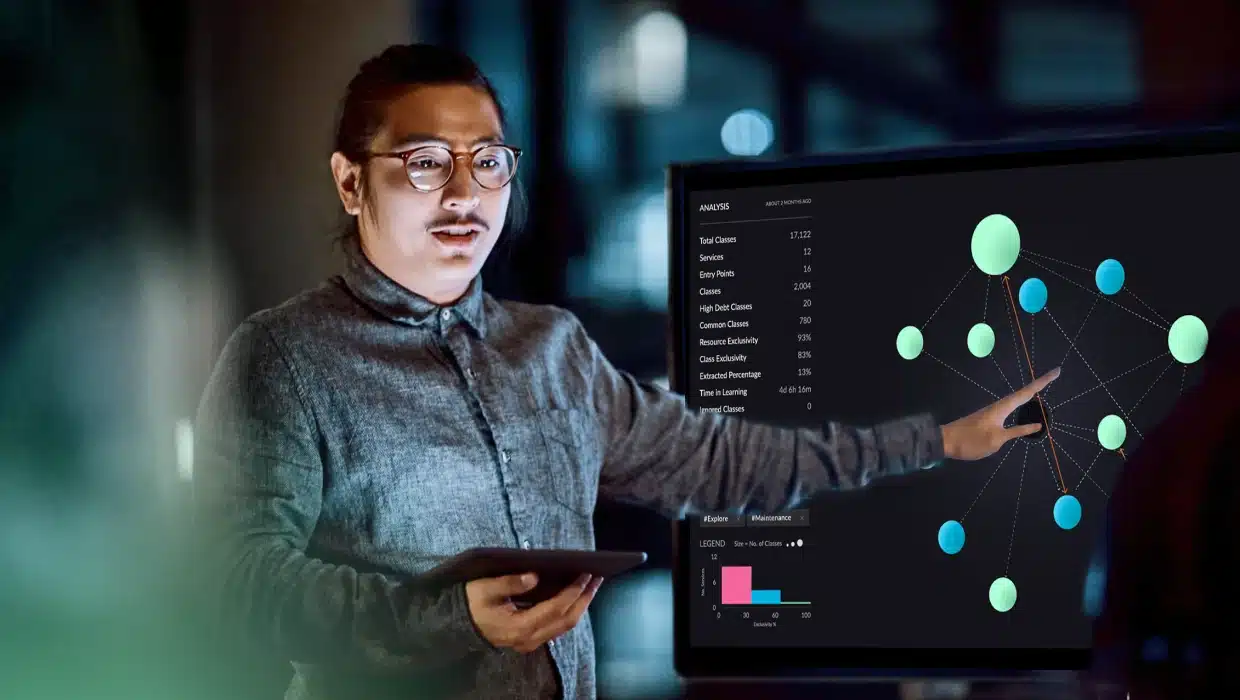Application modernization continues to gain traction. According to Foundry’s State of The CIO Study 2023, modernizing applications and infrastructures remains the third-highest initiative for Chief Information Officers (CIOs). It is also among the top five factors driving IT investment dollars in 2023. In fact, 91% of CIOs expect their budgets to increase or remain the same. The funds are needed to address application modernization trends.
Although organizations have made progress in modernizing legacy systems, they still have work to do if they want to achieve the following top five business initiatives:
- Improve operational efficiency
- Increase cybersecurity defenses
- Transform business processes
- Enhance the customer experience
- Increase profitability
The ongoing focus on modernization indicates that Kubernetes (K8s) and cloud platforms alone have not solved the problems of large legacy monoliths that cannot be easily lifted and shifted. In these cases, application modernization will require refactoring or rearchitecting.
Modernization is at the core of 2023’s number two priority—cybersecurity. Legacy systems present a significant risk. Not only are they unable to defend against modern attack vectors, but they contain old vulnerabilities that were never fixed. Cybercriminals actively scan potential targets for legacy systems that have unpatched vulnerabilities.
At the same time, outdated systems and monolithic architecture hinder business operations and user experience. Older technologies do not play well with advanced solutions. Transforming operations for improved efficiencies is the top priority for 45% of CIOs in 2023. In the current economic environment, more efficient processes are important for lowering expenses and protecting profitability.
Cloud migration plays a significant role in application modernization. While the cloud is not a prerequisite to modernization, many companies have made it part of their cloud strategy. Exactly how they combine to create a strategy depends on the organization.
Application Modernization Trends and the Legacy Dilemma
For most businesses, existing applications are still vital to business processes. They often support core functionalities and host essential data. Most organizations still use legacy systems because they are crucial to business operations. Dismantling such systems and building new ones would destabilize or disrupt business processes.
Related: What is Application Modernization? The Ultimate Guide
Monolithic applications technologies, infrastructure, and architecture are more rigid than newer microservices architectures. The older technologies limit the IT teams’ ability to develop new features quickly and efficiently. Some legacy systems are already obsolete, making replacing them challenging or impossible. In such cases, the only alternative is modernizing applications.
How Companies View the Legacy Dilemma
In many ways, companies view legacy systems “as the devil they know.” They are usually an integral part of business operations, and the magnitude of changing out a core system is unfathomable. As long as the system functions, they are reluctant to risk disruption.
For many organizations, the solution resides in the cloud. If lifting and shifting monolithic applications to the cloud adds to the life of a legacy system, many companies are willing to integrate old code into cloud-based platforms. However, the strategy is not without challenges.
Addressing Lift and Shift Challenges
Old and new technologies do not merge seamlessly. It often requires APIs or middleware to allow the systems to coexist. Once operational, the systems may lack performance capabilities. These are just a few of the challenges of rehosting a legacy application in the cloud.
Incompatibility
It may be possible to lift and shift applications to the cloud, but some apps are not compatible. Identifying these specific apps helps determine how to handle them before the move. Rehosting applications in the cloud can also lead to performance and latency issues. Applications that depend on third-party software are also often unsuitable for the lift and shift method.
Inefficiencies
While rehosting may move a legacy application to the cloud faster, it may take longer to optimize the older technology. Some apps may also be unable to leverage cloud computing resources. Since legacy applications are not cloud-native, it may be challenging to run them efficiently. Other application modernization methods, such as refactoring or rearchitecting, can deliver a more cloud-native application.
Cost
Moving a legacy application to the cloud with minimal changes may appear to be the least expensive and lowest-risk option. However, the long-term costs could be immeasurable. Without a cloud-native environment, organizations may struggle to deliver competitive products, resulting in lower market share and few customers.
Even though the legacy application is operating in the cloud, it cannot take advantage of all cloud capabilities. Critical visibility may not be available, making it more difficult for IT to troubleshoot the application or defend against cyberattacks. When deciding how to best modernize applications, businesses need to evaluate both long- and short-term factors.
Security Issues
Cloud security depends on the individuals implementing it. On-premise security best practices are not the same as in the cloud. Organizations looking at their first cloud application often lack the expertise to secure a cloud environment. Finding the talent to fill that gap is a challenge.
Staffing shortages in the tech field continue. The US Bureau of Labor Statistics predicts that the need for cybersecurity personnel will increase by 35% between 2021 and 2031. Job openings for software developers will increase by 25% during the same ten years. Overcoming the challenges of finding and retaining the necessary talent is a formidable task to ensure a secure cloud environment.
Shifting Priorities
A recent survey on the future of the cloud found that organizations that view moving to the cloud as a strategic part of their digital transformation achieved higher levels of innovation than their less strategic counterparts. The survey highlighted the value of maximizing cloud services. For example, those companies with cloud services that support advanced technologies such as artificial intelligence are 1.7 times more likely to receive increased value than businesses with a less mature infrastructure.
However, cloud-based transformation requires modernization. According to IBM, modernization amplifies the value of the cloud as much as 13 times if it is part of an end-to-end transformation. Even though 83% of executives agree that modernizing applications and data is critical to their business strategies, only 27% have modernized their workflows.
As priorities shift, organizations are re-evaluating their modernization strategies. Aligning business, modernization, and cloud strategies enables companies to optimize their cloud services to utilize application modernization trends.
Creating a Cloud Strategy for Application Modernization
Every business strategy should include a cloud strategy. Companies adopting a “cloud-first” policy need a plan for onboarding new and modernizing old workloads. As they look to develop strategies, businesses should consider implementing policies such as the following:
Modernizing Data
Gartner analysts predict that by 2025, at least 85% of companies will adopt the cloud-first principle. However, it won’t be easy to implement their digital strategies without cloud-native technologies. This rings true since the majority of enterprise workloads are not cloud-ready.
Related: Q&A Series: The 3 Layers of an Application: Which Layer Should I Modernize First?
So how do workloads become cloud-ready? Modernizing data is about replacing legacy databases to be able to handle distributed and streaming data sources and sinks. In order to modernize the data layer, modernization experts recommend starting first with the business logic layer.
Migrating to a New Architecture
Another application modernization trend is embracing new architectures. Instead of shifting a legacy application to the cloud in its entirety, you can move some of its features to more efficient architectures. This enables faster development.
When modernizing any application architecture, leveraging architectural observability tooling is essential. This will pinpoint architectural hotspots and drift issues. Addressing these problems incrementally while moving to new architectures will solve such issues. It also addresses security, scalability, and reliability concerns and helps resolve issues with tolerance, capacity, and redundancy.
Turning Monolith into Microservices
Monolithic applications have a single large codebase. In contrast, microservices applications operate independently. Every feature or application handles one service. This transformation to microservices improves the development and deployment of updates and new features. Technology stacks become more flexible. Also, there’s minimal risk of downstream effects that comes with changes in the underlying code.
Moving to the Cloud
The cloud revolutionized digital experiences with innovations such as mobile payment. Clearly, most legacy applications need cloud modernization. Cloud-native platforms allow developers to leverage the principles and tools of the cloud environment. It becomes possible to deploy new digital workloads to cloud-native platforms.
Going Hybrid
In some cases, fully modernizing for the cloud is unnecessary. Depending on business goals and budgets, organizations can incorporate public, private, and hybrid clouds. For instance, if an application experiences usage spikes, a public cloud can minimize the spikes. It can scale appropriately to accommodate the spikes at lower costs. However, if there’s little or no financial gain from a complete migration, a hybrid cloud is another option.
Incorporating Trends
Unless modernization is part of a cloud strategy, organizations will fail to realize its full value. Shifting legacy code to the cloud doesn’t provide the agility or resilience required in today’s competitive environment. Without application modernization, companies cannot address the 2023 trends impacting digital transformation.
How 2023 Trends Impact Application Modernization
Not all trends are positive. Ongoing labor shortages and cost-based decisions will hamper modernization efforts. Disruptive technologies will add pressure for cloud-native capabilities, and a lack of cultural change will allow technical debt to accumulate. These are just a few of the trends companies must address as they look to the future.
Finding Tech Talent
IBM’s study found that 45% of companies consider a lack of expertise as an obstacle to modernization. With less than 10% of employees having cloud or modernization experience, organizations need to look beyond new hires to acquire the expertise. Executives say financial constraints are the primary reason they lack experienced employees.
- Recruiting talent is expensive. Despite recent staff reductions in the tech sector, finding people to fill open positions can still take four to six months. That assumes CIOs can find them. Gartner found that 86% of companies have encountered more competition for candidates in 2023. Stiff competition means higher wages at a time when money is tight, and inflation paints an uncertain economic outlook.
- Retaining staff is critical. Garnter’s survey found 73% of CIOs worry about staff attrition. As demand continues to outpace supply, headhunters are looking to entice employees to change employers. Companies need to invest in their technical staff if they want to retain them.
Providing growth opportunities not only improves a business’s technology capabilities but also increases employee retention. Unfortunately, 43% of organizations cite budget constraints as the reason they fail to offer skills development. Another 38% say they are too busy to lose time to training, and 32% would rather hire new talent.
Related: Why Organizations Are Adding App Modernization to CCOE
Deciding whether to recruit or retain depends on an organization’s skills gap. Rather than default to a set strategy, CIOs need to determine what in-house capabilities exist with a little upskilling and what expertise needs to be hired. CIOs should also consider modernization tools that can reduce the time individuals spend on low-value tasks.
Understanding Disruptive Technologies
Knowing how disruptive technologies will impact business growth begins with modernization. New technologies such as artificial intelligence (AI), the Internet of Things (IoT), and virtualization all require modern applications operating in a cloud-native environment. Legacy systems will be too far removed to fit comfortably with emerging technology.
Artificial Intelligence
Generative AI uses AI to produce content. It acquires and synthesizes data to compose responses. For example, ChatGPT offers AI-powered chatbots that understand natural language, retain context, and deliver the most probable outcome. While generative AI is in its infancy, imagine how personalized customer experiences could be. Online shoppers could finally receive answers to questions such as
- Will this chair go with the rest of the room?
- Which appliance is the best choice for my needs?
- What goes with this shirt?
Answers to these questions can quickly dispel barriers to online purchases. However, organizations will need a modern infrastructure to take advantage of generative AI.
Internet of Things (IoT)
From drones to sensors, more devices are being deployed every day. Each device collects data that, when totaled, results in millions, even billions, of data points. Processing massive amounts of information requires cloud-based resources. It demands modernized applications that can turn data into valuable insights.
When an agricultural enterprise invests thousands in IoT devices, it needs applications that can take advantage of cloud computing capabilities. Deploying atmospheric sensors across acres of farmland helps farmers know when conditions are right for planting and harvesting. Having the right foundation ensures the results will be comprehensive and timely.
Controlling Technical Debt
Organizations continue to collect technical debt. According to McKinsey, they are stuck in a vicious cycle where IT struggles to keep up with requirements—expediency rules how solutions are implemented. The landscape grows more complex with each less-than-optimum deployment.
Most companies are aware that technical debt is killing modernization efforts. What they may not realize is that 40% of IT is technical debt. For every project, companies pay an additional 10% to 20% to address technical debt. Among CIOs, 30% believe at least 20% of their new product budget is consumed by technical debt.
McKinsey’s research found that reducing technical debt has far-reaching impacts. Engineers could spend as much as 50% more time working on value-oriented products. They would spend less time addressing system complexities. Uptime would improve, and resiliency would become a reality. To move forward, businesses need to control their technical debt.
Reducing technical debt isn’t just an IT problem. It’s a cultural problem where expectations focus on fast and low-cost solutions. No matter the intentions, if the culture is more concerned with immediate results than long-term viability, technical debt will continue to accumulate. Without an application modernization plan, accumulated debt will weaken an organization, making it impossible to remain competitive.
Future Proofing the Enterprise
McKinsey recommends that organizations make budget allocations to control technical debt a strategic decision. It’s not just flagging funds for modernization. It’s managing those funds separately, creating an environment of accountability and transparency. Executives must incorporate modernization into their strategic plan and develop monitoring processes to hold everyone accountable.
For example, the accounting department desperately needs a fix and hounds IT for delivery. IT can cludge something together, but the solution only adds to its technical debt. IT could deliver a quick fix and then provide a solution that eliminates the associated debt. However, delivering the follow-up solution means the sales department will need to wait another two weeks for their update.
Traditional approaches would have IT deliver the quick fix and complete the sales update on time. The accumulating debt would be IT’s problem to fix while juggling the myriad of high-priority projects. In many cases, the correction never happens.
Under McKinsey’s system, the decision would be strategic. It would mean balancing the short-term gain against future modernization. It would require executives to back the appropriate strategic decision regardless of the immediate impact.
Looking Beyond Cost
Although the majority of executives understand the toll technical debt inflicts on their businesses, they still consider cost as the primary factor when looking at application modernization. To future-proof their organizations, executives need to evaluate the opportunity costs as part of the cost analysis. What future capabilities will be lost if modernization doesn’t happen?
Moving technical debt considerations to the boardroom changes how application modernization happens. If a strategic objective is to use generative AI to improve customer experience, modernizing becomes part of the critical path. Updating older technology is woven into the business strategy to ensure that the use of generative AI happens.
Identifying IT’s skill gaps allows companies to assess where to place their human resource dollars. It also enables businesses to find automated solutions that can free staff from time-consuming, repetitive work. The more comprehensive the talent pool, the better an enterprise can navigate the future.
Navigating the Future
vFunction’s solution helps organizations future-proof their applications. Its platform helps turn Java or .NET monolithic structures into microservices. Using AI-powered technology, the product provides IT departments with the ability to control architectural drift in a continuous modernization environment. Request a demo or watch the video to learn more about future-proofing your enterprise.







